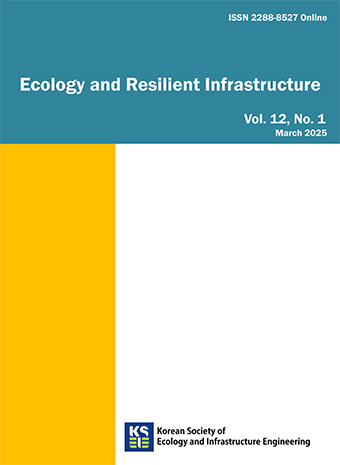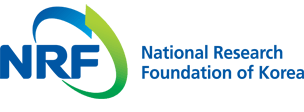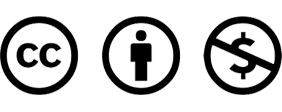Original Article
Asselman, N.E.M. 2000. Fitting and interpretation of sediment rating curves. Journal of Hydrology 234(3-4): 228-248.
10.1016/S0022-1694(00)00253-5Atieh, M., Mehltretter, S.L., Gharabaghi, B., and Rudra, R. 2015. Integrative neural networks model for prediction of sediment rating curve parameters for ungauged basins. Journal of Hydrology 531: 1095-1107.
10.1016/j.jhydrol.2015.11.008Campbell, F.B. and Bauder, H.A. 1940. A rating-curve method for determining silt-discharge of streams. Transactions, American Geophysical Union 21: 603-607.
10.1029/TR021i002p00603Cisty, M., Soldanova, V., Cyprich, F., Holubova, K., and Simor, V. 2021. Suspended sediment modelling with hydrological and climate input data. Journal of Hydroinformatics 23(1): 192-210.
10.2166/hydro.2020.116Gupta, D., Hazarika, B.B., Berlin, M., Sharma, U.M., and Mishra, K. 2021. Artificial intelligence for suspended sediment load prediction: a review. Environmental Earth Sciences 80(9): 346.
10.1007/s12665-021-09625-3Horowitz, A.J. 2003. An evaluation of sediment rating curves for estimating suspended sediment concentrations for subsequent flux calculations. Hydrological Processes 17(17): 3387-3409.
10.1002/hyp.1299Jang, E.K. 2017. Sediment discharge assessment for rivers using model tree in data mining. Doctoral dissertation, Myongji University. (in Korean)
Jang, E.K. and Kang, W. 2020. Model development for the estimation of specific degradation using classification and prediction of data mining. Journal of Korea Water Resources Association 53(3): 215-223.
Jang, E.K., Ji, U., and Ahn, M. 2018. Sediment discharge assessment and stable channel analysis using Model Tree of data mining for Naesung Stream. Journal of Korea Water Resources Association 51(11): 999-1009.
Jang, E.K., Ji, U., and Yeo, W. 2023. Estimation of sediment discharge using a tree-based model. Hydrological Sciences Journal 68(11): 1513-1528.
10.1080/02626667.2023.2221790Kang, W., Jang, E.K., Yang, C.Y., and Julien, P.Y. 2021. Geospatial analysis and model development for specific degradation in South Korea using model tree data mining. Catena 200: 105142.
10.1016/j.catena.2021.105142Kang, W., Lee, K., and Jang, E.K. 2022. Evaluation and validation of estimated sediment yield and transport model developed with model tree technique. Applied Sciences 12(3): 1119.
10.3390/app12031119Kang, W., So, B.J., Kim, S., Lee, J.H., Jang, E.K., and Kim, H.S. 2024. Update of Empirical Models for Predicting Specific Degradation in South Korea and Future Sediment Management Considering Climate Change. KSCE Journal of Civil Engineering 28(1): 186-196.
10.1007/s12205-023-0220-zKim, S.W. and Suh, K.D. 2013. Development of a Stability Formula for Tetrapod by Using M5' Model Tree. Journal of Korean Society of Coastal and Ocean Engineers 25(3): 138-146.
10.9765/KSCOE.2013.25.3.138Korea Water Resources Survey Technology Institute. 2022. 2021 Hydrological survey report. Seoul, South Korea: Korea Water Resources Survey Technology Institute.
Korea Water Resources Survey Technology Institute. 2023. 2022 Hydrological survey report. Seoul, South Korea: Korea Water Resources Survey Technology Institute.
Korea Water Resources Survey Technology Institute. 2024. 2023 Hydrological survey report. Seoul, South Korea: Korea Water Resources Survey Technology Institute.
Mulyono, T., Jumi, J., and Azizah, A. 2021. Sediments discharge analysis using tank model for disaster mitigation. IOP Conference Series: Materials Science and Engineering 1108(1): 012014.
10.1088/1757-899X/1108/1/012014Rezaei, K. and Vadiati, M. 2020. A comparative study of artificial intelligence models for predicting monthly river suspended sediment load. Journal of Water and Land Development 45: 107-118.
10.24425/jwld.2020.133052Rezaei, M., Kafaei, R., Mahmoodi, M., Sanati, A.M., Vakilabadi, D.R., Arfaeinia, H., ... and Boffito, D.C. 2021. Heavy metals concentration in mangrove tissues and associated sediments and seawater from the north coast of Persian Gulf, Iran: Ecological and health risk assessment. Environmental Nanotechnology, Monitoring & Management 15: 100456.
10.1016/j.enmm.2021.100456Seo, J., Woo, C., Lee, C., and Kim, D. 2018. Characteristics of sediment discharge based on GIS spatial analysis of area damaged by debris flow. Journal of the Korean Society of Hazard Mitigation 18(5): 89-96.
10.9798/KOSHAM.2018.18.5.89Walling, D.E. 1977. Assessing the accuracy of suspended sediment rating curves for a small basin. Water Resources Research 13(3): 531-538.
10.1029/WR013i003p00531- Publisher :Korean Society of Ecology and Infrastructure Engineering
- Publisher(Ko) :응용생태공학회
- Journal Title :Ecology and Resilient Infrastructure
- Journal Title(Ko) :응용생태공학회 논문집
- Volume : 11
- No :4
- Pages :135-144
- Received Date : 2024-11-08
- Revised Date : 2024-11-30
- Accepted Date : 2024-12-02
- DOI :https://doi.org/10.17820/eri.2024.11.4.135




 Ecology and Resilient Infrastructure
Ecology and Resilient Infrastructure







